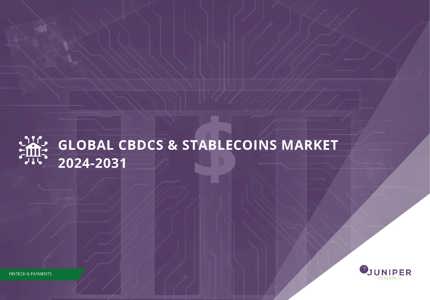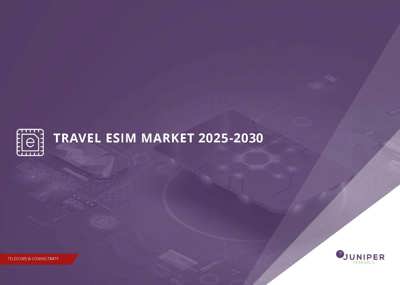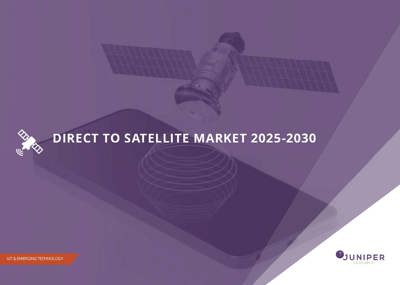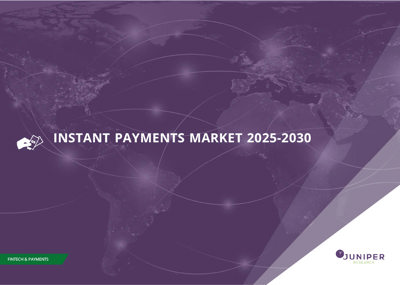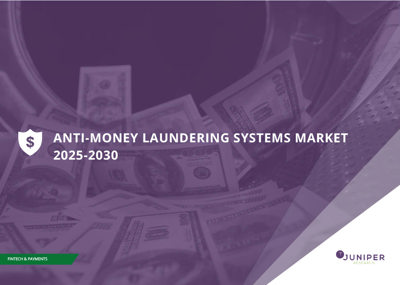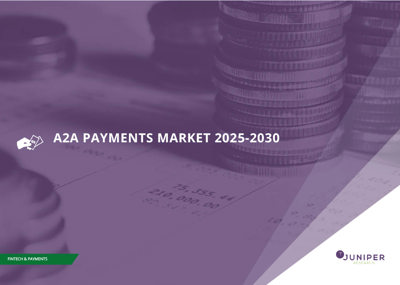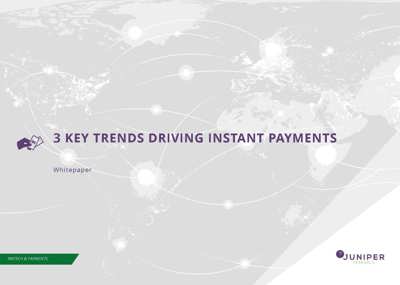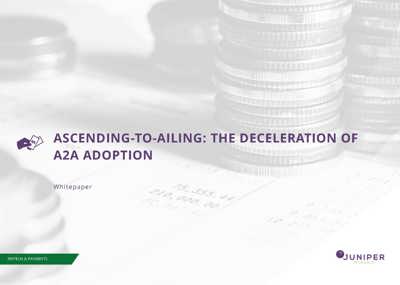What Are CBDCs & Stablecoins?
Payments are in a constant state of development, but the current market has seen the possibilities for payment types accelerate beyond what many in the market expected. To date, blockchain has had a mixed impact across payments and banking, but the rise of stablecoins and CBDCs threatens to accelerate this impact significantly.
As we discuss in our latest research , stablecoins and CBDCs are two ways of solving the same problem – how do you offer a better digitally native payments solution? Most existing payment types have been designed around traditional systems intended for in-person or telephone payments, such as credit cards, or even cash. Stablecoins and CBDCs are showing what can happen if a system is designed from the ground up as digital.
However, this begs the question: precisely what are CBDCs and stablecoins?
CBDCs
A CBDC is an additional form of money issued, monitored and controlled by a central bank. Similar to fiat currencies, the supply of CBDCs is also controlled by a central bank’s monetary and fiscal policies.
What makes CBDCs different to stablecoins and other forms of decentralised digital currencies is that, when issued by the central bank, it must be accepted as a form of payment by all within the market. Additionally, it must be a safe store of value by all consumers, merchants, stakeholders and government agencies.
However, similar to a stablecoin, a CBDC is pegged 1:1 to the corresponding fiat currency, meaning that the value of the crypto coin is always the same as the fiat currency. Additionally, as it is a digital currency, consumers are required to have a digital wallet, but do not need to have a traditional bank account to use and hold CBDCs.
CBDCs are fundamentally different to other forms of cryptocurrency. The intention is that a CBDC would largely rely on the existing payment infrastructure and would need to be integrated with core banking systems to enable payments without the need to create and install an entirely new financial infrastructure. Therefore, as an objective, the deployment of a CBDC is completely different to a stablecoin. A CBDC is designed to enhance and complement existing payment systems, whereas a stablecoin is designed to bypass them completely.
The corresponding digital wallets used for CBDCs can be used with smartphones, smart devices and wearables, in the same way as a typical digital wallet service that may or may not be linked to a card or bank account.
Stablecoins
A stablecoin is a cryptocurrency that has its value pegged to that of another currency, commodity or alternative financial instrument.
Stablecoins can be exchanged or integrated with other digital assets, as they are a store of value and medium of exchange through DLTs (Distributed Ledger Technology). Transactions using stablecoins do not rely on an intermediary to facilitate a settlement, which means that transactions can be settled almost instantly.
Additionally, this means that payments and transactions can be made 24/7, with no restrictions or wait times, as they do not rely on a payment facilitator. The reason stablecoins were developed was to combine the benefits of cryptocurrencies, including being encrypted and cryptographically secured, without the volatility associated with decentralised cryptocurrencies.
There are four main types of stablecoins, which are detailed below:
Fiat-collateralised stablecoins: A fiat-backed stablecoin is a cryptocurrency that is pegged to the value of a fiat currency to ensure it follows the price dynamics of its associated currency. Additionally, the stablecoin is backed by physical cash held in reserves.
Crypto-collateralised stablecoins: This is a completely decentralised way of creating a relatively more stable crypto coin, by backing the value of the stablecoin with digital asset reserves, instead of fiat cash reserves. It is key to note that this method of backing cryptocurrencies still leads to high levels of fluctuations and price volatility, but by over-collateralising the coins, the risk of the coin completely crashing is reduced.
Commodity-collateralised stablecoins: These are cryptocurrencies backed by a reserve of real assets such as oil or gold. Commonly, this works by pegging the value of one coin to a specific unit of a commodity. For example, a stablecoin may be backed to one fine ounce of gold held in a reserve.
Algorithmic stablecoins: These are coins that are not backed by any kind of asset, nor do they use any reserve. Instead, the stablecoin uses a completely algorithmic approach, which adjusts the supply of the coin in response to fluctuations in price, creating a price stability mechanism. An example of this would include incentivising users to sell a particular coin that is trading above a certain value, at a profit, to pull the price back down to a more stable rate.
As stablecoins can function as independent blocks, they can operate with smart contracts to create payments and other financial services. Within this model, stablecoins can be transacted when certain conditions written into the code have been met, providing a fully automated solution.
However, stablecoins do have some limitations. Like traditional cryptocurrencies, stablecoins are not centrally controlled, they are distributed. This can raise a challenge for central banks and payment system regulators, who will seek greater control over the payment rails that are available within their areas of responsibility.
Related Reading
Our complimentary whitepaper, CBDCs ~ A New Wave in Payments, examines the progress to date within CBDC development and the potential for future growth.
“Juniper Research’s new CBDCs & Stablecoins research provides in-depth analysis and evaluation of how these new payment system risk types are being developed and commercialised within financial markets; delivering critical insights on how they will change business models in payments, key vendors driving the evolution of the market and the future prospects for these payment types of digital assets. It provides an evaluation of the development of CBDCs (Central Bank Digital Currencies) and stablecoins across 19 different key countries of interest. The study also contains the Juniper Research Competitor Leaderboard; positioning 15 key CBDCs platform vendors.”
Latest research, whitepapers & press releases
-
 ReportOctober 2025Telecoms & Connectivity
ReportOctober 2025Telecoms & ConnectivityTravel SIMs & eSIMs Market: 2025-2030
Our comprehensive Travel eSIMs research suite comprises detailed assessment of a market undergoing rapid growth. It provides insight into how travel eSIM providers can differentiate their services to maximise success in the market over the next two years.
VIEW -
 ReportOctober 2025IoT & Emerging Technology
ReportOctober 2025IoT & Emerging TechnologyDirect to Satellite Market: 2025-2030
Juniper Research’s Direct to Satellite research suite provides satellite providers, investors, and partners, such as Mobile Network Operators, with an extensive analysis and insights into the direct to satellite market.
VIEW -
 ReportSeptember 2025Fintech & Payments
ReportSeptember 2025Fintech & PaymentsInstant Payments Market: 2025-2030
Juniper Research’s Instant Payments research suite provides a wide-ranging and strategic analysis of this market; enabling stakeholders - from banks, infrastructure providers, regulators, and businesses - to understand future growth, key trends, and the competitive environment.
VIEW -
 ReportSeptember 2025Fintech & Payments
ReportSeptember 2025Fintech & PaymentsAnti-money Laundering Systems Market: 2025-2030
Our AML Systems research suite provides a detailed and insightful analysis of this evolving market; enabling stakeholders from financial institutions, law enforcement agencies, regulatory bodies and technology vendors to understand future growth, key trends, and the competitive environment.
VIEW -
 ReportSeptember 2025Fintech & Payments
ReportSeptember 2025Fintech & PaymentsA2A Payments Market: 2025-2030
Our A2A Payments research suite provides detailed analysis of this rapidly changing market; enabling A2A payments service providers to gain an understanding of key payment trends and challenges, potential growth opportunities, and the competitive environment.
VIEW -
 ReportSeptember 2025Telecoms & Connectivity
ReportSeptember 2025Telecoms & ConnectivityMobile Messaging Fraud Prevention Market: 2025-2030
Our Mobile Messaging Fraud Prevention research suite provides a detailed and insightful analysis of a market set for significant disruption over the next five years. It enables stakeholders from mobile operators, enterprises, and mobile messaging fraud prevention vendors to understand how the market for mobile messaging fraud will evolve, as well as the impact of AI, RCS, and the evolving competitive environment.
VIEW
-
 WhitepaperOctober 2025IoT & Emerging Technology
WhitepaperOctober 2025IoT & Emerging TechnologyBeam Me Up: The Direct to Satellite Revolution
Our complimentary whitepaper, Beam Me Up: The Direct to Satellite Revolution, evaluates the future key services that satellite providers must offer in the direct to satellite market.
VIEW -
 WhitepaperSeptember 2025Fintech & Payments
WhitepaperSeptember 2025Fintech & PaymentsCore Banking Transformation - A Strategic Conversation with SAP Fioneer
Core banking transformation is no longer optional, as regulatory change, rising compliance costs, and shifting customer expectations make legacy systems unsustainable. Anna Koritz, Global Head of Transaction Banking at SAP Fioneer, shares how banks can overcome cultural and technical hurdles and why SAP Fioneer’s modular, cloud-ready approach enables confident modernisation.
VIEW -
 WhitepaperSeptember 2025Fintech & Payments
WhitepaperSeptember 2025Fintech & PaymentsFrom Detection to Prevention: The Next Era of Anti-money Laundering
Our complimentary whitepaper, From Detection to Prevention: The Next Era of Anti-money Laundering, examines the state of the AML systems market; considering the impact that a changing regulatory environment and a growing number of use cases is having on the market. Additionally, it includes a forecast summary of the total value of the AML systems market in 2030.
VIEW -
 WhitepaperSeptember 2025Fintech & Payments
WhitepaperSeptember 2025Fintech & Payments3 Key Trends Driving Instant Payments
Our complimentary whitepaper, 3 Key Trends Driving Instant Payments, assesses how key trends are driving the evolution of the instant payments market, and which challenges these resolve. Additionally, it includes a forecast summary of the global transaction values via instant payment schemes by 2029.
VIEW -
 WhitepaperSeptember 2025Fintech & Payments
WhitepaperSeptember 2025Fintech & PaymentsAscending-to-Ailing: The Deceleration of A2A Adoption
Our complimentary whitepaper, Ascending-to-Ailing: The Deceleration of A2A Adoption, examines the state of the A2A payments market; considering the impact of this payment method and how it is shaping the modern payments landscape through lower fees and enriched user experience.
VIEW -
 WhitepaperSeptember 2025Telecoms & Connectivity
WhitepaperSeptember 2025Telecoms & ConnectivityRCS Fraud: Emerging Threats in Next-gen Messaging
Our complimentary whitepaper, RCS Fraud: Emerging Threats in Next-gen Messaging, examines the future of the messaging fraud prevention market, with a particular focus on the latest trends within RCS Business Messaging (RBM). Additionally, it includes a forecast summary of the total cost of fraud over RBM to subscribers in 2030.
VIEW
-
IoT & Emerging Technology
Satellite Broadband Market to Break $20 Billion by 2030, as Satellite Constellations Disrupt Established Services
October 2025 -
Fintech & Payments
Subscription Economy to Reach $1.2 Trillion by 2030 Globally, Despite Increasing Subscription Fatigue
October 2025 -
Fintech & Payments
AML Systems Market to Surpass $75 Billion by 2030 Globally, With LexisNexis Risk Solutions, Oracle, and Experian Leading the Defence
September 2025 -
Fintech & Payments
Instant Payments to Exceed $110 Trillion by 2029 Globally, Accelerated by European Regulation & FedNow Impact
September 2025 -
Fintech & Payments
B2B Payments to Hit $224 Trillion by 2030 Globally, Driven by Emerging Market Expansion
September 2025 -
Fintech & Payments
A2A Transaction Value to Reach $195 Trillion in 2030 Globally, Driven by Advanced Value-added Services
September 2025

